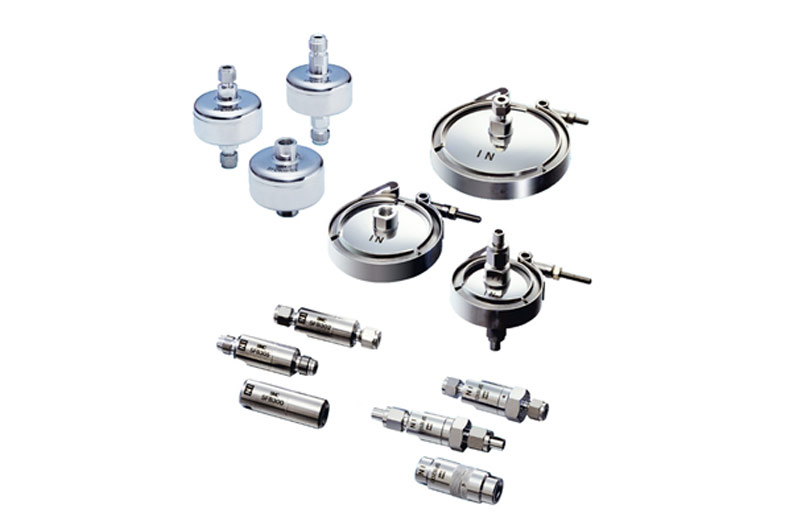Our SF series filters in various designs are made for clean room applications. They filter even the finest particles from pure gas that can be created by moving parts in the line, such as when opening and closing valves.
The SF filters round off our product ranges in the (ultra pure) gas and high vacuum segments. In these two areas in particular, the purity requirements are extremely high – it is important to avoid particles as much as possible.
SF filters undergo several tests
SF series clean gas filters are available in different versions: disposable, reusable and sieve versions. All parts of the filter are washed in a clean environment with ultrasound or deionized, ultra-pure water and assembled, tested and double-packed in the clean room. For the insert versions, a 0.1 µm purity test and a leak test are carried out; for the disposable version, a 0.1 µm purity test, a helium leakage test and a pressure retention test are carried out. We only release 100 percent tested and approved clean gas filters for shipping.
Membrane or sintered metal for the filter elements
When it comes to filter elements, you can choose between membrane or sintered metal. The membrane model has a filtration of 0.01 µm (99.9 percent efficiency) and a maximum flow of 26 l/min to 300 l/min. The filtration of the sintered metal model is 120 µm (optional: 1-100 µm) and the maximum flow is 400 l/min. Models with and without a replaceable filter element are available.
The highest purity is required in the semiconductor industry
When microchips are manufactured, tiny structures are made that can be destroyed even by extremely fine particles. In order to protect the respective product, the use of filters is essential in production.
To produce a microchip, the wafer must first be manufactured. A wafer is the approximately one millimeter thin disk made of a semiconductor material, which is the starting product for chip production. Further steps include so-called doping, in which the wafer is seeded with foreign molecules, and lithography, in which lacquers are applied, exposed and thus hardened. This is how structures are generated on the wafers. Another technique is etching, which can be carried out in several ways.
All of these processes use corrosive chemicals or gases. All media required to process the wafer must be supplied in highly pure systems, as even the slightest traces of metal can cause short circuits in the thin tracks.
Would you like to find out more about the different versions and areas of application of our SF series clean gas filters?
Contact us – our team will be happy to answer your questions.

 DE
DE CZ
CZ HU
HU PL
PL SI
SI